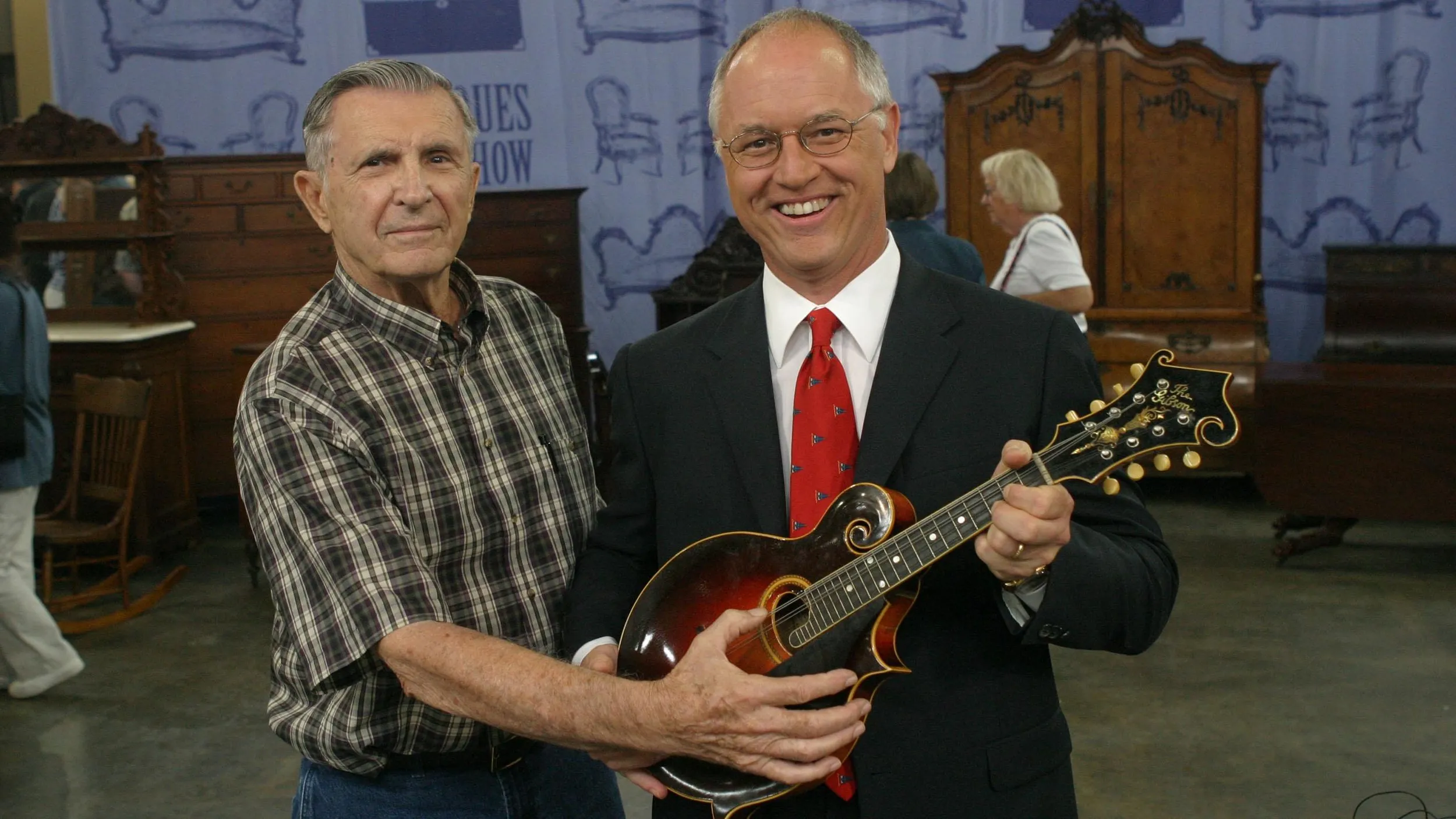GUEST: We bought it in an antique shop in Chattanooga, Tennessee, 25 to 30 years ago.
APPRAISER: What did you like about it when you saw it? What did you like?
GUEST: Well, we just liked the finish, we liked the proportions, the shape, we liked the legs.
APPRAISER: The curves, okay, okay.
GUEST: We liked that the little foot was different, and we later understood that it was a spade foot.
APPRAISER: Do you know what these are also called?
GUEST: No.
APPRAISER: We call them "slipper feet" in the trade, because they look like a little slipper foot. This line right here is from where a tray molding was applied, like, a concave molding, and that probably got lost over 100 years ago.
GUEST: Oh, wow.
APPRAISER: And that could've held things on, and if somebody went like this, at least the teacup wouldn't spill off it. And this tea table, which is what it is... I don't know if you knew what it was used for.
GUEST: Well, we thought it was probably a tea table, but we use it as an end table.
APPRAISER: Okay-- it was made in Ireland, probably in the 1730s or the 1740s.
GUEST: Oh!
APPRAISER: Irish tables often have this nice bulged apron, with these C scrolls. Then you have that slipper foot, which really was popular all through Ireland. And when you flip this over, you can see that the secondary wood, right here, is a deal-- it's a red pine. And this type of pine, when it turns up over there, it's called deal wood. It's a soft wood, and it has knots in it, and also, you see a lot of wormholes.
GUEST: Uh-huh.
APPRAISER: All those things are things we see on Irish tables, okay? This is mahogany.
GUEST: Oh.
APPRAISER: And most of the Irish ones are mahogany. What'd you pay?
GUEST: We paid maybe around $1,800 for it.
APPRAISER: $1,800 a while ago-- that's quite a lot of money back then, yeah.
GUEST: Yes, it was a lot, it was a big decision.
APPRAISER: Today, a table like this, with this tray molding missing, is probably worth $4,000.
GUEST: Uh-huh.
APPRAISER: If you actually had a nice new molding put on, and you could get the design to look a lot nicer, and probably in somebody's shop, it would probably be worth $6,500 or $7,000.
GUEST: Wow.
APPRAISER: Because it just, it just... look nicer, it would give some definition to that edge, and your cognac wouldn't spill off it, okay?
GUEST: I like that idea.
APPRAISER: Now, if this were an American table made in Virginia, in the Lower Rappahannock Basin, okay? The American version of this that they made here by Irish immigrants in the 1750s in Virginia, it'd be worth probably about $200,000, $250,000.
GUEST: Oh.
APPRAISER: It really would.
GUEST: Yeah.
APPRAISER: It would, because those are so rare.











